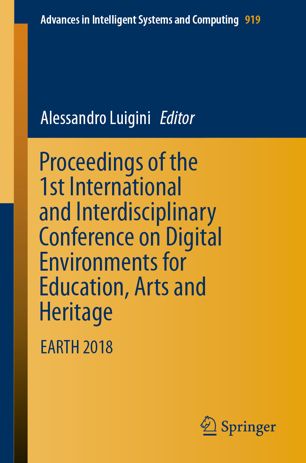

Most ebook files are in PDF format, so you can easily read them using various software such as Foxit Reader or directly on the Google Chrome browser.
Some ebook files are released by publishers in other formats such as .awz, .mobi, .epub, .fb2, etc. You may need to install specific software to read these formats on mobile/PC, such as Calibre.
Please read the tutorial at this link: https://ebookbell.com/faq
We offer FREE conversion to the popular formats you request; however, this may take some time. Therefore, right after payment, please email us, and we will try to provide the service as quickly as possible.
For some exceptional file formats or broken links (if any), please refrain from opening any disputes. Instead, email us first, and we will try to assist within a maximum of 6 hours.
EbookBell Team

5.0
48 reviewsThis book gathers peer-reviewed papers presented at the 1st International and Interdisciplinary Conference on Digital Environments for Education, Arts and Heritage (EARTH2018), held in Brixen, Italy in July 2018. The papers focus on interdisciplinary and multi-disciplinary research concerning cutting-edge cultural heritage informatics and engineering; the use of technology for the representation, preservation and communication of cultural heritage knowledge; as well as heritage education in digital environments; innovative experiments in the field of digital representation; and methodological reflections on the use of IT tools in various educational contexts. The scope of the papers ranges from theoretical research to applications, including education, in several fields of science, technology and art. EARTH 2018 addressed a variety of topics and subtopics, including digital representation technologies, virtual museums and virtual exhibitions, virtual and augmented reality, digital heritage and digital arts, art and heritage education, teaching and technologies for museums, VR and AR technologies in schools, education through digital media, psychology of perception and attention, psychology of arts and communication, as well as serious games and gamification. As such the book provides architects, engineers, computer scientists, social scientists and designers interested in computer applications and cultural heritage with an overview of the latest advances in the field, particularly in the context of science, arts and education.